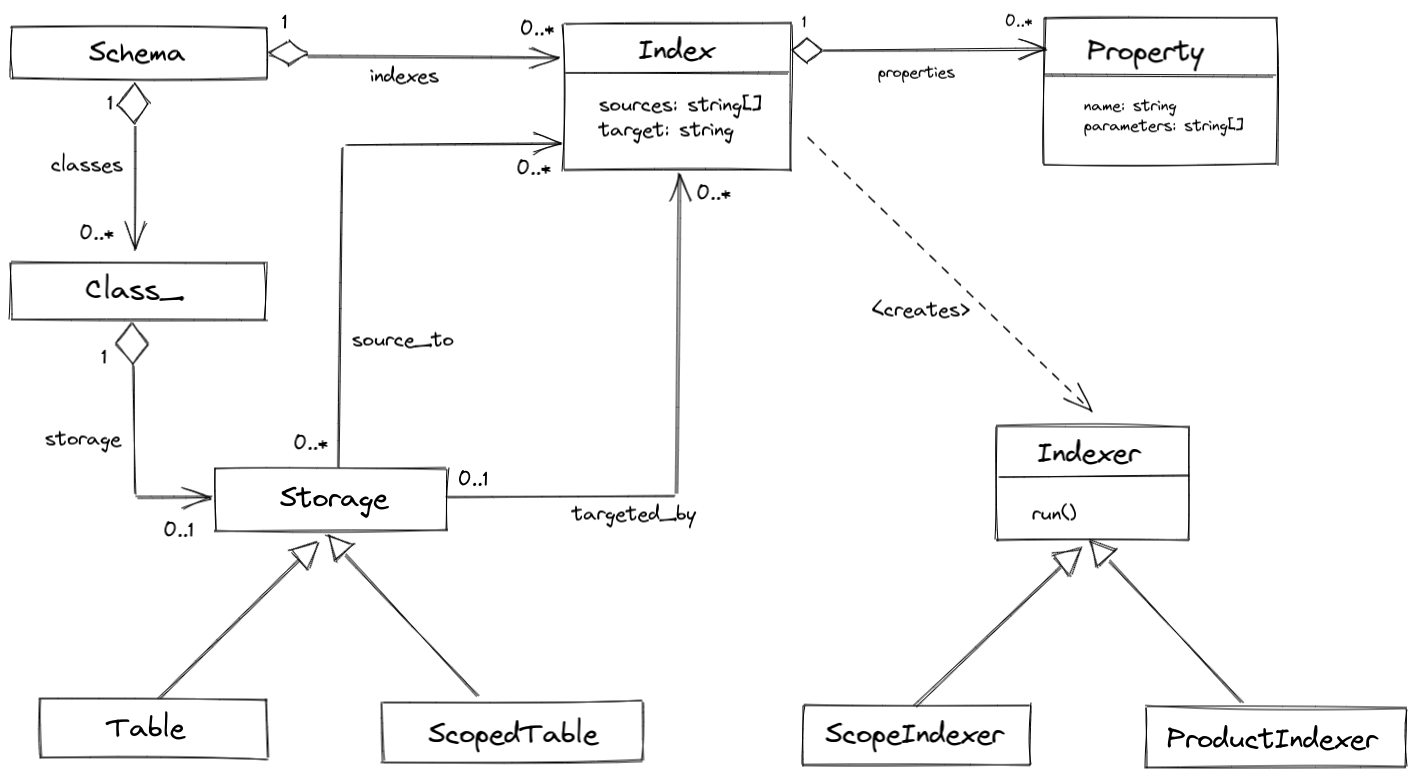Osm Admin: Indexing (2)
2 years ago ∙ 3 minutes read
Today, I implemented computation of indexed properties during insert. The implementation dictated some changes in indexed property definitions compared to the initial design, and how indexers are reflected into the data schema.
Also, I implemented a table query class working on top of Laravel Query\Builder. More about it next time, for now I'll review how indexed properties are computed during INSERT operation.
More details:
- Indexers And Indexed Properties
- Index Information In Schema
- How Indexed Properties Are Computed On INSERT
Indexers And Indexed Properties
Let's recap the initial indexing design with some changes I made while implementing INSERT operation.
A data class may contain indexed properties that are computed from other parts in the database whenever they change. The process of computing indexed properties is called indexing.
Indexing is performed by indexers - classes derived from the Indexer class. Each indexer specifies one or more sources - from where it takes the source data, and the target - where it put computed data. Most often, sources and targets are database table names.
For example, the ScopeIndexer computes indexed properties in the scopes table based on the values stored in a parent record in the same table:
use Osm\Admin\Base\Attributes\Indexer\Source;
use Osm\Admin\Base\Attributes\Indexer\Target;
...
#[Target('scopes'), Source('scopes')]
class ScopeIndexer extends TableIndexer
{
...
} Each indexer contains the computation logic for the indexed properties in its index_*() methods. For example, the ScopeIndexer computes three properties - level, id_path, and parent:
#[Target('scopes'), Source('scopes')]
class ScopeIndexer extends TableIndexer
{
protected function index_level(?Scope $parent): int {
return $parent ? $parent->level + 1 : 0;
}
protected function index_id_path(?Scope $parent, int $id): string {
return $parent ? "{$parent->id_path}/{$id}" : "{$id}";
}
protected function index_parent(?int $parent_id): Scope|Object_|null {
return $parent_id
? query(Scope::class)
->raw(fn(QueryBuilder $q) => $q->where('id', $parent_id))
->hydrate()
->first(['level', 'id_path'])
: null;
}
}Each index_*() method specifies data required for computation in its parameters. Some data, for example parent_id, is manually filled in by the user. id is assigned by the database engine. Other data, such as parent, is computed by other index_*() methods.
Index Information In Schema
Information about each indexer class is reflected into Index objects, and information about all its indexed properties goes to Indexing\Property objects. All Index objects are a part of the schema:

A Table, or ScopedTable, detects indexes it's targeted_by by its table name written in the index target property. It also detects indexes it's source_to by its table name written in the index sources property.
Schema::$indexes is sorted by index dependency. Keys in this array are indexer class names.
Index::$properties are sorted by computation dependency.
Keys in Storage::$targeted_by are type names targeted by indexes , or an empty string '' if an index targets all objects of the data class.
How Indexed Properties Are Computed On INSERT
Before inserting provided data object into the underlying table, all the index_*() methods of the indexer that targets it are invoked, and their results are added to the inserted object.
The methods are invoked starting from the least dependent. For example, the index_level() method expects parent property, so it's invoked after calling index_parent() method.
If an indexing method expects id, it's postponed after INSERT, as ID is not assigned to the record yet. For example, index_id_path() method expects id, so it invoked after the INSERT operation takes place, and the computed value added to the inserted record with an additional UPDATE.
Example
For example, consider an INSERT statement from the test suite:
$retailId = query(Scope::class)->insert((object)[
'title' => __('Retail'),
'parent_id' => 1,
]); The insert() is handled as follows:
the underlying indexer,
ScopeIndexer, computes and addsparentandlevelproperties to the object being inserted:$data = (object)[ 'title' => __('Retail'), 'parent_id' => 1, 'parent' => Scope::new(['level' => 0, 'id_path' => 1]), 'level' => 1, ];The object is inserted into the database. The
titleproperty doesn't have a dedicated column and goes todataJSON. Theparentproperty is not defined as a serialized property in the data class, and is not saved:id parent_id level id_path data 2 1 1 null {"title": "Retail"}The record ID is added to the data object:
$data = (object)[ 'title' => __('Retail'), 'parent_id' => 1, 'parent' => Scope::new(['level' => 0, 'id_path' => 1]), 'level' => 1, 'id' => 2, ];The postponed
id_pathproperty is computed and added to the data object:$data = (object)[ 'title' => __('Retail'), 'parent_id' => 1, 'parent' => Scope::new(['level' => 0, 'id_path' => 1]), 'level' => 1, 'id' => 2, 'id_path' => '1/2', ];Postponed properties are assigned to the record with an additional update:
id parent_id level id_path data 2 1 1 1/2 {"title": "Retail"}

